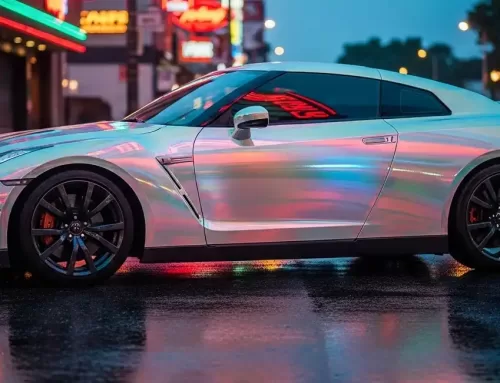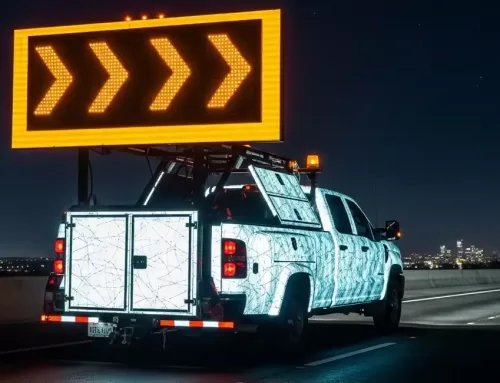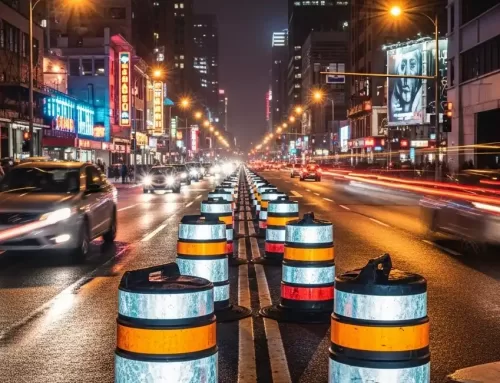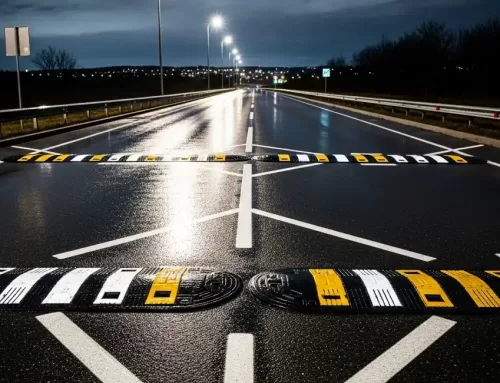Why can we see traffic signs at night?
I wonder if you have noticed an interesting phenomenon: you can clearly see traffic signs at night, such as the vests of traffic police, road signs, road markings, anti-collision cylinders, and license plates of vehicles in front of you.
These objects obviously do not have the function of self-luminescence, but we can see bright spots in the distance.
So, why can we see them?
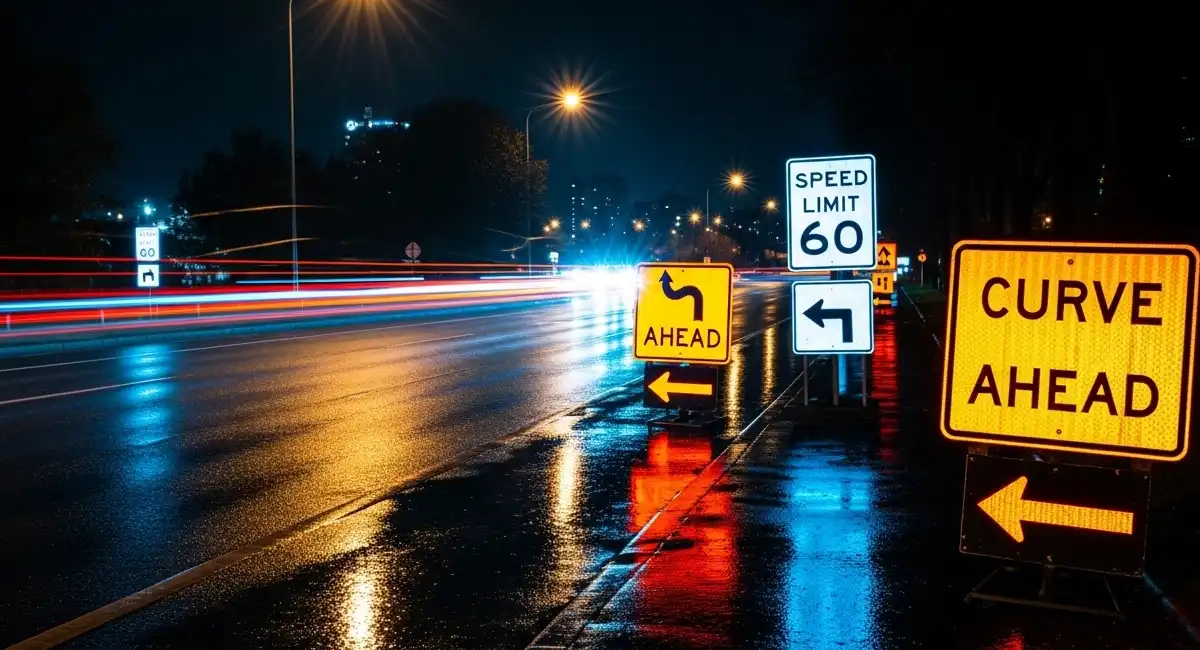
How is such a strong reflection achieved?
Reflective materials play an obvious warning role with their bright colors during the day.
At night or in low light conditions, their eye-catching reflective effect can effectively enhance people’s recognition ability.
And they are mainly used for personal safety protection and traffic safety protection.
The application fields of reflective materials can be divided into two categories: the planned special market and the civilian market.
The planned special market generally refers to the field where reflective materials must be used according to national laws and regulations, mainly known as traffic safety fields, such as traffic signs, license plates, and car body reflective signs.
infrastructure warning signs in industries such as communications and electricity;
high-visibility warning clothing for firefighting, road administration, police, and safety rescue; the civilian market generally refers to various types of clothing, shoes, hats, bags, billboards, and other fields.
Retroreflection coefficient performance index:
There are many index factors to measure the performance of retroreflective materials, the most important of which is the retroreflective ability of the material, which determines the quality grade of the reflective material and is directly related to traffic safety and personal safety.
Retroreflection coefficient definition:
It is used to describe the amount of light that is reflected back to the light source after it hits the surface of an object, that is to say, the ratio of the reflected light to the irradiated light, and the unit is: candela/per lux square meter (cd/(lx·m²))
What are the technical index requirements?
GB/T 18833-2012 “Reflective Film for Road Traffic Signs” divides various retroreflective materials into 7 types as the design basis for various highway traffic signs.
Each type of reflective film has a corresponding retroreflective coefficient, and the retroreflective coefficient also distinguishes colors.
Different colors have various requirements, and their retroreflective coefficients are also different.
However, the larger the retroreflective coefficient, the better the retroreflective performance of the reflective film or reflective cloth.
But it cannot be too high, otherwise it may cause light seepage and visual glare of the font.
In a sense, the application of retroreflective materials is a more proactive safety precaution, which is more valuable than measures such as guardrail protection aimed at reducing the degree of injury after an accident.
Reflective materials provide reliable protection at a low cost in transportation.
We look forward to its further development to provide more beautiful and diversified solutions for road safety.
